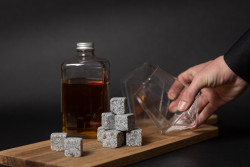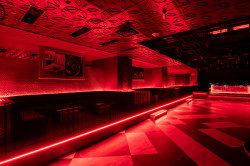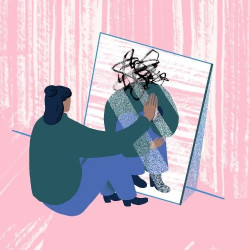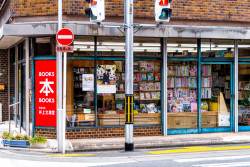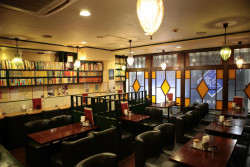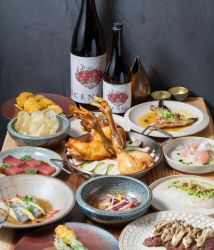
December 26, 2011
Irving Penn and Issey Miyake
Creative synergy remembered at Tokyo’s temple of style
By Metropolis
Originally published on metropolis.co.jp on December 2011

If Tokyo has a style temple it is undoubtedly the snazzy 21_21 Design Sight. This angular-roofed building, designed by superstar architect Tadao Ando, and located in the park behind the Tokyo Midtown building, is used to host exhibitions focusing on fashion and product design, and seldom puts a foot wrong.

The venue’s latest show, “Irving Penn and Issey Miyake: Visual Dialogue,” takes a look at the collaboration between fashion giant Miyake, who is also one of the museum’s directors, and Penn, an equally legendary photographer who shot the garments from Miyake’s biennial collections for 13 years from 1987 to 1999.
According to Miryon Ko, 21_21’s PR manager, Miyake had long admired Penn’s work for the fashion magazine Vogue and was keen to find a lensman who could do more than merely snap magazine-friendly glossies of his latest designs.
“He had become known in the fashion world but he felt he was losing what is really important for him,” Ko explains. “So he needed someone who could really look at his work and evaluate it correctly, not in terms of trends or fashions.”

In effect Miyake wanted someone with a strong, independent aesthetic sense to help him see his work through a fresh pair of eyes. With a reputation in his field equal to that of Miyake’s in clothes design and a playful and iconoclastic approach to his subject, Penn was just the ticket.
The show includes an animated film based on drawings by Michael Crawford, a cartoonist for New Yorker magazine, which details how the pair collaborated. According to the story presented, Miyake would send his attaché de press, Midori Kitamura—now the President of Miyake Design Studio—with the dresses from his latest Paris collections to Penn in New York. Penn would then have a completely free hand in how he shot them.
“Miyake would inevitably be surprised and moved by the photos I brought back to him from New York,” Kitamura remembers. “The perspectives they mirrored would provide great inspiration for the subsequent collection.”
Although Miyake and Penn occasionally socialized, the designer was never present at any of the photo sessions and never tried to influence them in any way. Working with a team that included make up by Tyen and hair styling by Johan Sahag, Penn employed a range of techniques to bring Miyake’s designs to life in new and unexpected ways.
While some of the photos are admittedly quite straightforward, others show the use of distortion or an emphasis on the underlying simplicity of some of Miyake’s APOC designs. The full spectrum of techniques can be seen in the 67 posters on display and the large catwalk-style video installation that shows around 148 of Penn’s shots.
In one of Penn’s images, a jacket from the 1987 collection is inflated with air to create a kind of balloon effect, which takes the padded-shoulder, power-dressing fashion of the 80s to new heights of sartorial absurdity. In another shot the garments are scrunched up into twisted rolls of cloth, emphasizing the technique used to create their crumpled texture, while deemphasizing the visual and structural elements.
A photograph that later became the book jacket for “Irving Penn Regards the Work of Issey Miyake” (1999), shows two outfits in a shiny, metallic-looking material. Penn, noticing the visual affinities with suits of armor, has posed the empty garments in adversarial poses, as if they were fighting each other. The fact that Penn could playfully mock Miyake’s designs and even their relationship in this way shows the strength of the confidence and trust between these two talented creators.
While there is much to enjoy at this show, one weakness is a lack of any actual Issey Miyake garments. This gives the show a slightly more virtual feeling than is either necessary or desirable.
“Irving Penn and Issey Miyake: A Visual Dialogue,” 21_21 Design Sight, until Apr 8 (listing).
